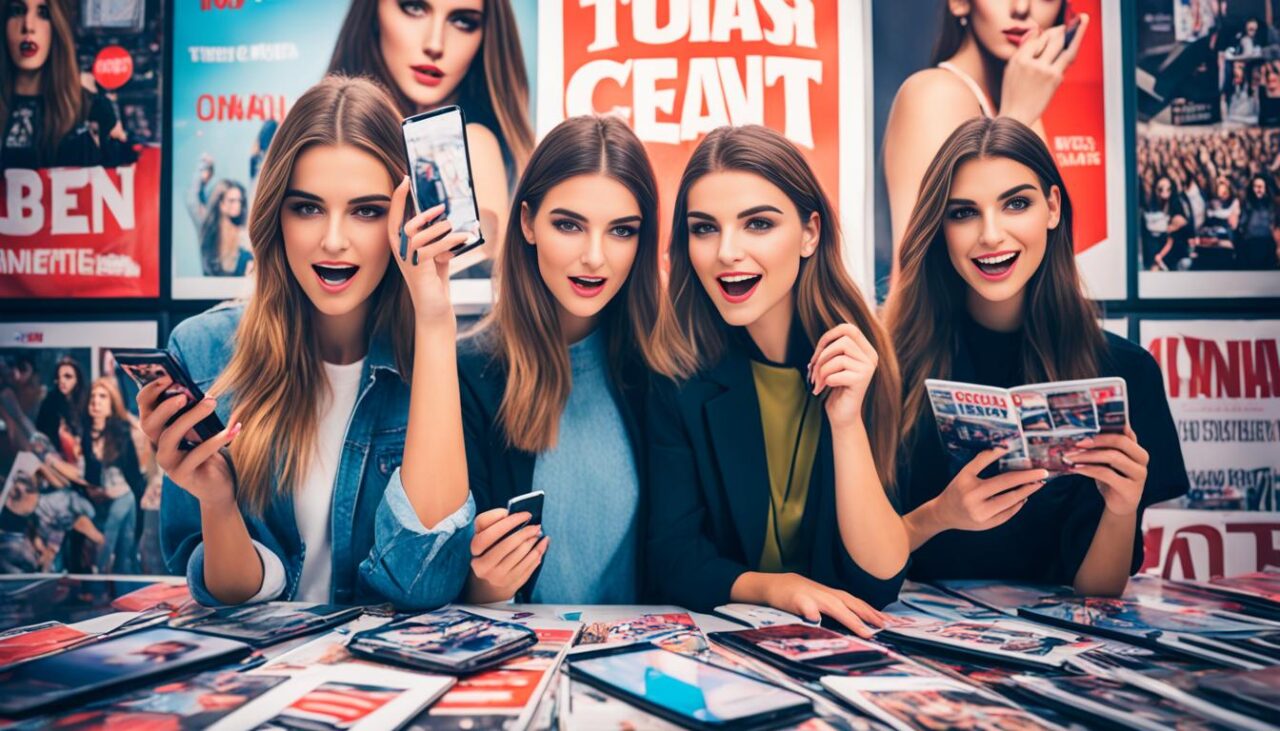Welcome to our article series on the impact of media beauty standards on young people. In today's digital age, where media exposure is ubiquitous, it is important to understand how the media shapes the self-image of adolescents. From advertisements to social media platforms, visual media plays a powerful role in defining beauty ideals for the younger generation.
Media exposure has a profound influence on youth, often leading to the internalization of unrealistic beauty standards. This can significantly impact their self-esteem and overall mental well-being. The constant bombardment of images showcasing an idealized version of beauty can create feelings of inadequacy and a distorted perception of oneself.
Moreover, generational differences add another layer of complexity to this issue. The changing landscape of media and technology means that young people today are exposed to a wider range of beauty standards compared to previous generations. This can lead to confusion and conflict as they navigate through different societal expectations.
Understanding the power of media on adolescent self-image is crucial for promoting healthy development and self-acceptance. In the following sections, we will delve deeper into the influence of media exposure on youth, explore the role of visual media in shaping beauty standards, and provide strategies for navigating through the complex effects of visual culture on adolescents.
Understanding the Power of Media on Adolescent Self-Image
Media plays a significant role in shaping the self-image of today's youth. The constant exposure to media beauty standards has a profound influence on how adolescents perceive themselves and their appearance. From an early age, young people are bombarded with images of the “ideal” body type, flawless skin, and perfect features.
Media exposure affects self-image among adolescents in various ways. One of the primary impacts is the pressure to conform to societal expectations of beauty. Society often equates beauty with success, acceptance, and desirability, creating a significant influence on how young people view themselves. This influence can lead to feelings of inadequacy and a distorted perception of one's own body.

The power of visual media cannot be understated when it comes to shaping beauty standards for young people. Advertisements, magazines, and social media platforms inundate teenagers with carefully curated images that promote a narrow definition of beauty. These visuals establish unrealistic standards that often exclude diversity and reinforce harmful stereotypes.
“The constant exposure to media messages emphasizing a narrow definition of beauty can significantly impact a teenager's self-esteem and body image. It's crucial for us to understand the influence of media and work towards promoting more inclusive and positive representations of beauty.”
Peer pressure also plays a pivotal role in how youth perceive themselves. Adolescents are highly susceptible to the opinions and judgments of their peers. The desire to fit in and be accepted can drive young people to conform to the beauty standards perpetuated by media. This pressure further reinforces the negative impact of media exposure on self-image.
Adolescence is a time of great vulnerability, and the influence of visual culture on young people cannot be underestimated. The pervasive presence of media beauty standards plays a significant role in shaping adolescent self-image. From magazines to social media, young people are constantly bombarded with unrealistic ideals of beauty.
One of the primary challenges that adolescents face is the pressure to conform to these unrealistic beauty standards. Peer pressure compounds this issue, as young people seek validation and acceptance from their peers. The desire to fit in and be considered attractive according to media-defined norms can have a profound impact on their self-esteem and mental well-being.
This pressure to conform is further complicated by generational differences. While previous generations also faced the influence of media, today's youth must navigate the added complexities of social media and the hyper-connected world. The constant online presence and comparison culture can intensify the feelings of inadequacy and perpetuate a distorted sense of self.
Fortunately, strategies can be implemented to help young people foster a positive self-image and navigate the complex effects of visual culture. Open dialogue, education, and fostering critical thinking skills can empower adolescents to challenge societal beauty norms and develop a healthy perspective on their own unique qualities. Encouraging a supportive environment where individuality is celebrated and embracing diverse representations of beauty can also contribute to a more positive self-image among young people.







